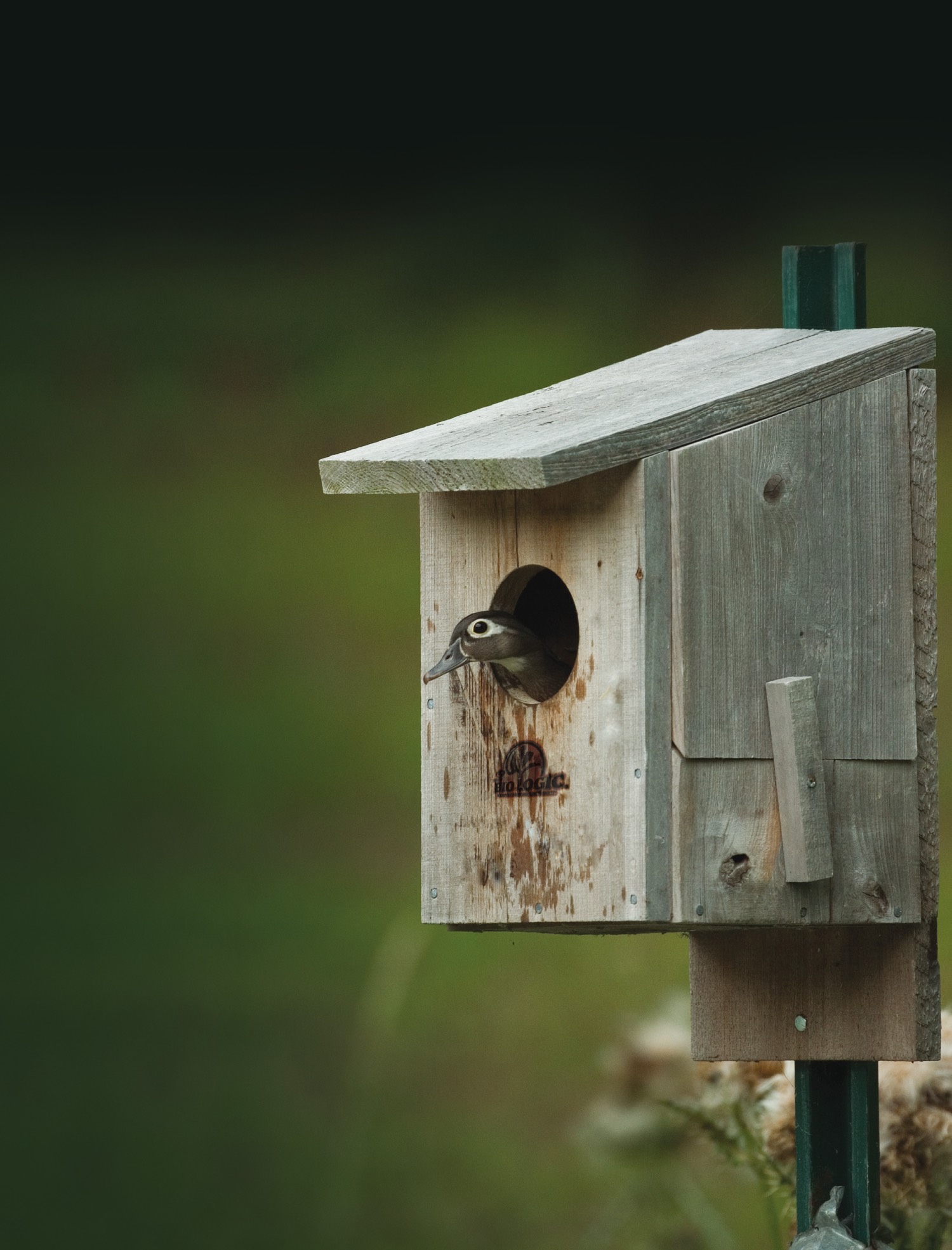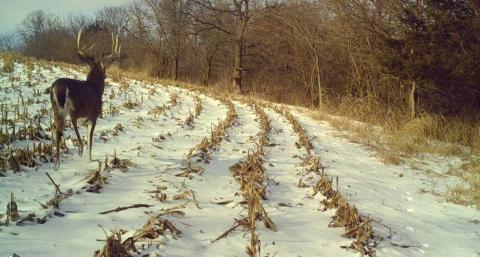
Written by Bob Humphrey
Paddling around the bend of a local stream late one spring morning my eye was immediately attracted to a shape along the shoreline. Though made of rough-hewn wood, the even, horizontal and vertical lines of a wood duck nest box stood out starkly against a background of crooked and gnarled willows. I hadn’t noticed it before and wondered how it got there. As I paddled on, I pondered how any wood duck box got where it was, or how the device even came to be in the first place.
One source credits their origin to Gil Gigstead and Milford Smith, biologists with the U.S. Biological Survey (precursor to the U.S. Fish and Wildlife Service) who, in 1937 erected 486 wooden next boxes in Chautauqua National Wildlife Refuge in Illinois. That may well have been their first widespread application, but next boxes were already in use as early as 1912, which sort of makes sense.
The end of the 19th Century saw numbers of waterfowl, and many other bird species, plummeting to the brink of extinction. The principal cause was unregulated market gunning, which typically took place during both spring and fall migrations. Long distance migrants at least had the safety of remote nesting grounds in summer.
Wood ducks, sometimes called the summer duck, have a more southerly year-round range and a distribution closer to more populated and accessible areas. As a result, they were more susceptible to market gunners, and on a year-round basis. Once thought to be the most abundant waterfowl species in North America, they were nearly gone by the early 20th Century.
Watch: HOW TO BUILD A WOOD DUCK BOX
Out of this environmental disaster came the birth of modern wildlife conservation as hunters increasingly called upon state and federal wildlife agencies to take action and protect North America’s waterfowl and gamebird populations. One of the first steps was the Migratory Bird Treaty Act, followed first by outright prohibitions and later, restrictions on waterfowl hunting. That helped with many species, but wasn’t enough for the wood duck.
Fortunately, those early efforts by Gigstead, Smith and others inspired a young biologist named Frank Bellrose, who’s name would eventually become synonymous with the species he spent most of his adult life studying. He and Arthur Hawkins put up another 700 boxes throughout Illinois over the next two years, more than half of which were occupied by wood ducks. They also looked at which boxes were used, which nests were successful and why.
Those early boxes were attached directly to trees and were crude, made of rough-cut cypress slabs. As a result, they had a relatively short lifespan. Nonetheless, ducks used them, but so did other species, and predators soon learned to key in on them as a food source.

Thanks in large part to nest box programs, wood duck populations are strong and continue to grow. Photography by Delmarvaphoto.
Bellrose and his colleagues addressed longevity issues by changing from wood slabs to rough-cut unfinished lumber, which lasted longer but still allowed ducklings to climb to the exit hole. To reduce predation they first tried matching entrance hole size to that of natural tree cavities. Next, instead of attaching the boxes to trees, they mounted them on wooden timbers or metal poles over open water. The game changer came when they started attaching conical metal predator guards below the next boxes.
The rest, as they say, is history. Federal and state wildlife agencies, private conservation groups and eventually private individuals began wood duck box programs, many of which continue to this day. You can still make and install wooden boxes, but modern technology has also brought us synthetic boxes that are easier to install and maintain, and far more durable and long-lasting. While the U.S. Fish and Wildlife Service does not survey wood duck populations, they estimate there may be as many as 3 million breeding pairs and much of the species’ success is directly related to artificial nest boxes.






























